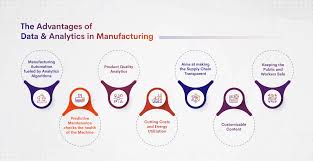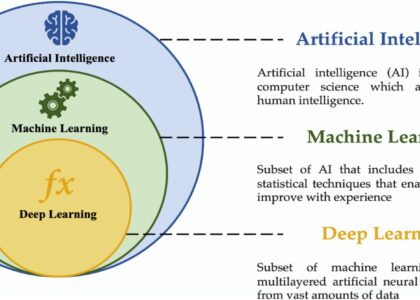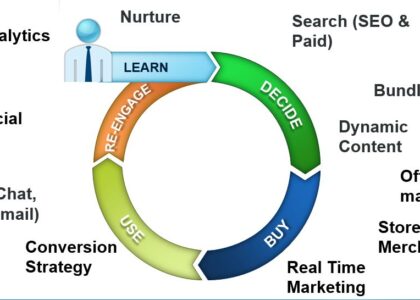The Power of Manufacturing Data Analytics
In today’s competitive manufacturing landscape, data analytics has emerged as a powerful tool for driving efficiency, improving quality, and enhancing decision-making processes. By harnessing the vast amounts of data generated in the manufacturing environment, companies can gain valuable insights that lead to operational excellence and sustainable growth.
Enhancing Operational Efficiency
Manufacturing data analytics allows companies to monitor and analyse various aspects of their operations in real-time. By tracking key performance indicators (KPIs) such as production output, downtime, and quality metrics, manufacturers can identify inefficiencies and bottlenecks in their processes. This insight enables them to make data-driven decisions that streamline operations, reduce waste, and improve overall efficiency.
Improving Product Quality
Quality control is a critical aspect of manufacturing, and data analytics plays a crucial role in ensuring product quality meets or exceeds standards. By analysing data from sensors, machines, and other sources, manufacturers can detect anomalies or deviations in the production process that may affect product quality. This proactive approach allows companies to take corrective actions promptly, preventing defects and reducing rework.
Optimising Supply Chain Management
Manufacturing data analytics also extends beyond the shop floor to optimise supply chain management. By analysing supply chain data such as inventory levels, lead times, and supplier performance, manufacturers can identify opportunities for cost savings, improve forecasting accuracy, and enhance collaboration with suppliers. This holistic view of the supply chain enables companies to make strategic decisions that drive efficiency and reduce operational risks.
Driving Continuous Improvement
Continuous improvement is a fundamental principle in manufacturing, and data analytics provides the insights needed to drive ongoing enhancements. By monitoring trends over time and conducting root cause analysis on issues identified through data analysis, manufacturers can implement targeted improvements that lead to sustainable growth and competitive advantage. This iterative process of analysis, action, and evaluation fosters a culture of continuous improvement within organisations.
The Future of Manufacturing Data Analytics
As technology continues to advance rapidly, the future of manufacturing data analytics holds even greater promise. Innovations such as artificial intelligence (AI), machine learning, and predictive analytics are transforming how manufacturers leverage data to drive innovation and stay ahead of the competition. By embracing these technologies and investing in digital transformation initiatives, companies can unlock new opportunities for growth and success in an increasingly digital world.
Understanding Manufacturing Data Analytics: Key Concepts and Benefits
- What is big data analytics in manufacturing industry?
- How data analytics is used in manufacturing?
- What is analytical manufacturing?
- What are the 5 data analytics?
- How to analyse production data?
- What are the benefits of manufacturing analytics?
- What is manufacturing data?
- What is the manufacturing data?
What is big data analytics in manufacturing industry?
Big data analytics in the manufacturing industry refers to the process of collecting, analysing, and interpreting vast amounts of data generated throughout the manufacturing lifecycle to extract valuable insights and drive informed decision-making. By leveraging advanced analytics tools and techniques, manufacturers can gain a deeper understanding of their operations, identify patterns and trends, predict outcomes, and optimise processes for improved efficiency and productivity. Big data analytics empowers manufacturers to uncover hidden opportunities, mitigate risks, enhance quality control, and ultimately transform their operations to stay competitive in today’s data-driven world.
How data analytics is used in manufacturing?
Data analytics plays a pivotal role in manufacturing by harnessing the power of data to drive operational efficiency, enhance product quality, and optimise decision-making processes. In manufacturing, data analytics is used to monitor key performance indicators (KPIs), such as production output, downtime, and quality metrics, in real-time. By analysing data from various sources, including sensors and machines, manufacturers can identify patterns, trends, and anomalies that provide valuable insights into their operations. These insights enable companies to make informed decisions that streamline processes, reduce costs, improve productivity, and ultimately gain a competitive edge in the industry.
What is analytical manufacturing?
Analytical manufacturing refers to the practice of using data analytics and advanced technologies to drive insights and improvements in the manufacturing process. By leveraging analytical tools and techniques, manufacturers can analyse vast amounts of data generated throughout the production lifecycle to identify trends, patterns, and opportunities for optimisation. Analytical manufacturing enables companies to make informed decisions, enhance operational efficiency, improve product quality, and ultimately achieve greater competitiveness in the market. This strategic approach empowers manufacturers to proactively address challenges, streamline processes, and drive continuous improvement across their operations.
What are the 5 data analytics?
In the realm of manufacturing data analytics, the question “What are the 5 data analytics?” often arises as companies seek to understand the key types of data analytics that can drive operational improvements and strategic decision-making. The five primary categories of data analytics in manufacturing include descriptive analytics, diagnostic analytics, predictive analytics, prescriptive analytics, and cognitive analytics. Each type serves a distinct purpose in extracting insights from manufacturing data, ranging from historical performance analysis to future trend forecasting and even real-time decision support. By leveraging these diverse analytical approaches, manufacturers can unlock the full potential of their data to drive efficiency, quality, and innovation across their operations.
How to analyse production data?
Analysing production data in manufacturing involves a systematic process of collecting, processing, and interpreting data to gain valuable insights into the performance of production processes. To analyse production data effectively, manufacturers typically start by defining key performance indicators (KPIs) that align with their business goals. They then collect relevant data from various sources such as sensors, machines, and production systems. Once the data is collected, it is processed and analysed using statistical methods, data visualisation tools, and advanced analytics techniques to identify patterns, trends, and anomalies. By interpreting the analysed data, manufacturers can make informed decisions to optimise production efficiency, improve quality, and drive continuous improvement initiatives within their operations.
What are the benefits of manufacturing analytics?
Manufacturing analytics offers a multitude of benefits that are instrumental in enhancing operational efficiency, improving product quality, optimising supply chain management, and driving continuous improvement within manufacturing processes. By harnessing the power of data analytics, manufacturers can gain valuable insights into their operations, enabling them to make informed decisions that lead to cost savings, waste reduction, and increased productivity. The proactive monitoring and analysis of key performance indicators empower companies to identify opportunities for process optimisation and innovation, ultimately fostering a culture of continuous improvement and sustainable growth.
What is manufacturing data?
Manufacturing data refers to the vast array of information generated and collected throughout the production processes in the manufacturing industry. This data encompasses various aspects such as machine performance metrics, production output, quality control measurements, supply chain logistics, and more. By capturing and analysing this data, manufacturers can gain valuable insights into their operations, identify trends, detect anomalies, and make informed decisions to improve efficiency, quality, and overall performance. Effectively harnessing manufacturing data through analytics empowers companies to optimise processes, drive continuous improvement, and stay competitive in today’s fast-paced industrial landscape.
What is the manufacturing data?
Manufacturing data refers to the vast amount of information generated throughout the production processes in a manufacturing environment. This data encompasses a wide range of metrics, including production output, machine performance, quality control measurements, inventory levels, supply chain logistics, and more. By capturing and analysing this data using advanced technologies such as sensors, IoT devices, and data analytics tools, manufacturers can gain valuable insights into their operations. These insights enable companies to make informed decisions, identify areas for improvement, optimise processes, enhance product quality, and drive overall efficiency in the manufacturing industry.






